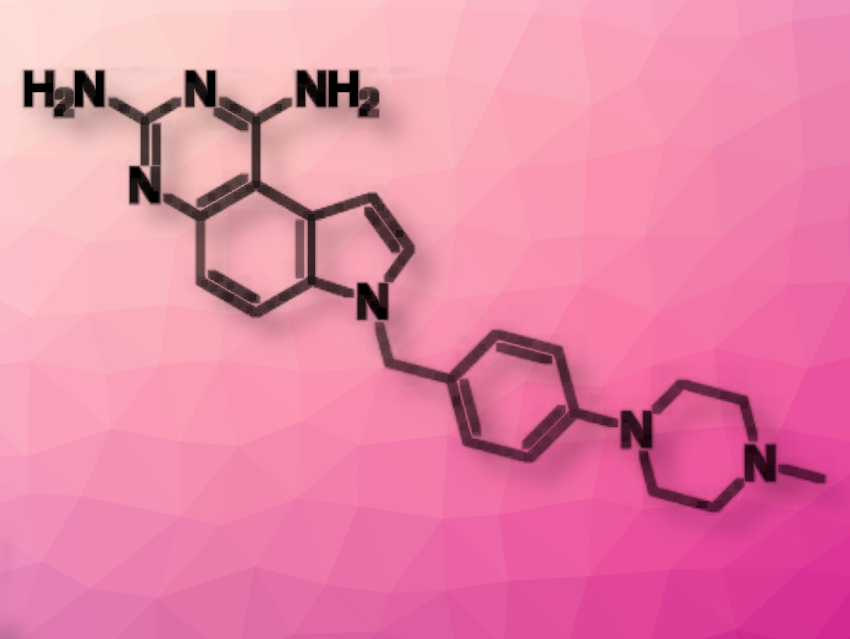Antibiotic resistance has become a major global health crisis due to the decreasing availability of drugs for treating drug-resistant bacteria. Therefore, it is necessary to develop new antibacterial drugs with unique mechanisms of action. To address this issue, new antibacterial drugs with unique mechanisms of action are necessary. Irresistin-16 (IRS-16) is a promising dual-target antibacterial candidate that inhibits folate biosynthesis and destroys membrane integrity, effectively killing various bacteria.
Xiong Zhu, China Pharmaceutical University, Nanjing, Jiangsu, China, and colleagues have synthesized a series of 7-substituted-1,3-diaminopyrrol[3,2-f]quinazolines based on IRS-16 as potential antibacterial agents. The scaffold 1,3-diamino-7H-pyrrol[3,2-f]quinazoline was synthesized from 5-nitroindole through reduction, nucleophilic substitution, and cyclization. Different benzyl halides were linked to the scaffold to give the desired compounds. In some cases, benzyl halides could be first attached to 5-nitroindole, and then undergo reduction, nucleophilic substitution, and cyclization reactions to prepare the target compounds.
The team tested the antibacterial activity of the synthesized derivatives against common pathogens and found that the introduction of appropriate nitrogen-containing aromatic heterocycles or hydrophilic amines could enhance activity against Gram-negative pathogens. One derivative that stood out was an N-methylpiperazine-bearing compound (pictured) that showed potent activity against regular and drug-resistant strains of gram-positive and gram-negative bacteria, while also preventing the development of drug resistance in Escherichia coli. This compound also demonstrated low toxicity towards mammalian cells, improved water solubility, and poor hemolytic activity.
According to the researchers, these results indicate that developing new derivatives of 1,3-diamino-7H-pyrrol[3,2-f]quinazoline has the potential to combat emerging bacterial resistance, and may lead to the development of new antibiotics with unique mechanisms of action.
- Design, Synthesis and Biological Evaluation of 7‐Substituted‐1,3‐diaminopyrrol[3,2‐f]quinazolines as Potential Antibacterial Agents,
Duo Yuan, Shangde Liu, Shanshan Li, Rongrong Liu, Xiong Zhu,
ChemMedChem 2023.
https://doi.org/10.1002/cmdc.202300078




